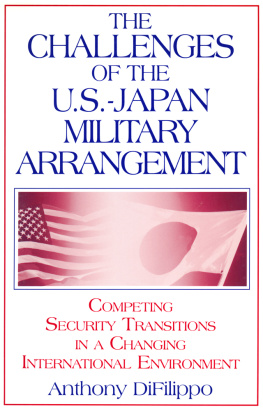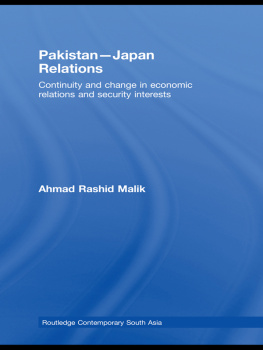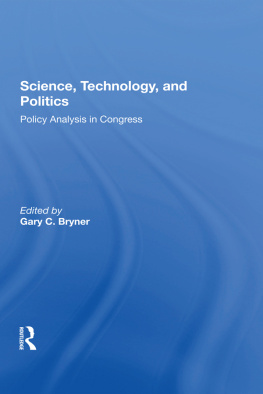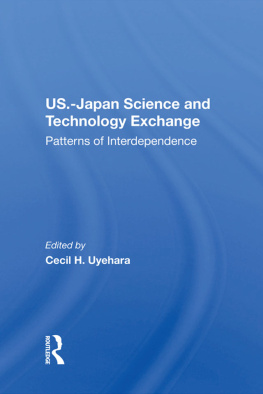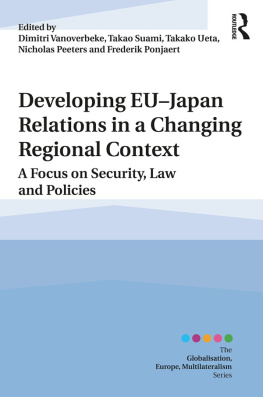CRACKS IN THE ALLIANCE
Dedicated to my family.
First published 1997 by Ashgate Publishing
Reissued 2018 by Routledge
2 Park Square, Milton Park, Abingdon, Oxon, OX14 4RN
711 Third Avenue, New York, NY 10017
Routledge is an imprint of the Taylor & Francis Group, an informa business
Copyright Anthony DiFilippo 1997
All rights reserved. No part of this book may be reprinted or reproduced or utilised in any form or by any electronic, mechanical, or other means, now known or hereafter invented, including photocopying and recording, or in any information storage or retrieval system, without permission in writing from the publishers.
Notice:
Product or corporate names may be trademarks or registered trademarks, and are used only for identification and explanation without intent to infringe.
Publishers Note
The publisher has gone to great lengths to ensure the quality of this reprint but points out that some imperfections in the original copies may be apparent.
Disclaimer
The publisher has made every effort to trace copyright holders and welcomes correspondence from those they have been unable to contact.
A Library of Congress record exists under LC control number: 97070885
ISBN 13: 978-1-138-61239-6 (hbk)
ISBN 13: 978-1-138-61240-2 (pbk)
ISBN 13: 978-0-429-46346-4 (ebk)
This book is an analysis of the relationship between the United and Japan, mainly since the end of World War II. It investigates many of the major issues and problems that have affected this relationship, most notably those related to science, technology, trade and defense. It further proposes a comprehensive agenda for Japan, specifically that it fashion a new approach for a strengthened bilateral relationship in the changed global system. This book argues forcefully that Japan must firmly and unequivocally establish itself as a genuine post-Cold War superpower by actively promoting authentic international security through the United Nations, devoid of U.S. hegemonic influence.
Following the introduction, which briefly examines this books content and purpose, the early chapters focus largely on the divergent science and technology paths taken by Japan and the United States and show how this has related to ongoing bilateral trade problems. Although the last two chapters change the direction of the book, they are not meant to be analytically separate from its earlier empirical arguments. Rather, the purpose of the last two chapters is to detail the changes that have taken place in the bilateral relationship and in the global system, as well as to introduce the prospects for new directions in this relationship and in the international arena.
I have been fortunate in many ways during the course of my work on this book. A number of people helped me indeed, too many to list here by providing crucial information. Among them at the Japanese Embassy in Washington, D.C. were Akira Furukawa, Katsuyuki Ohyama, Kimikazu Iwase, Hideo Yamazaki, and A. Fujita. Ken-ichi Iwasaki, Director of the Japan Information Center of Science and Technology in Washington D.C., kindly gave his time and supporting information. In Tokyo, Keiko Horie Chief of the International Cooperation Unit in the Statistics Bureau of the Management and Coordination Agency provided me with historical data on Japanese research and development expenditures and activities. Staff members at the National Science Foundation were also helpful in supplying information for this work, among them Lawrence Rausch who made available to me U.S.-Japan data on high technology trade. The staff at the Office of Technology Assessment was helpful by expeditiously making reports available to me. Working ideas drafted and presented at several professional forums gave me academic feedback on some of my ideas, ultimately enabling me to further develop my analyses. My colleague and friend Chronis Polychroniou was instrumental in arranging a stay for me during the Spring 1994 semester as a Research Associate at Tufts Universitys Fletcher School of Law and Diplomacy. This appointment relieved me of my teaching responsibilities and gave me the free time necessary to work on this book. While there, I made particularly good use of the library resources of the Documentation Center on Contemporary Japan at Harvard University and, to a lesser extent, its Kennedy School Library. During the course of this work, I also received several small research stipends from Lincoln University. These stipends enabled me to travel to libraries including specialized ones, such as the Japan Economic Institute of America and the Sasakawa Peace Foundation USA, both in Washington, D.C. to perform some of the research for this book. Certainly not the least of all was the invaluable assistance I received from my wife Patty who exhaustively read the manuscript.
Finally, I must point out that in the Notes section that follows each of the chapters in this book Japanese names are written as they appear in the original text material.
Anthony DiFilippo
December 1996
Different from four decades ago, today the alliance between the United States and Japan is in relatively poor shape. Despite the argument which maintains that the diplomatic framework in which these two nations have long operated has produced the impression of ongoing conflict and tension, while at a more fundamental level, where it really counts, relations have been good, the past decade in particular has given rise to a steady stream of serious problems in the alliance. Indeed, the troubled alliance between Japan and the United States has supplanted the tensions that emanated from superpower discord that existed during the Cold War. U.S.-Japan discord stems not from the conflict between two nations that have antithetical economic and political orientations. Rather, it is a intense inter-capitalist rivalry manifested mainly in bilateral trade that decisively demonstrates the importance of economic issues.
Contemporary trade issues, however, relate intrinsically to the possession of science and technology (S&T). Together, S&T has historically been a major investment catalyst of growth, and in todays global economy indispensable to a dynamic industrial nation since it is a primary source of innovation. With regard to U.S.-Japan relations, it is not just the problems connected to the visible possession of and access to S&T that has strained the alliance, but also the fact that the trade dispute increasingly became the outcome of its application.
In this work it will be shown that this new superpower discord is rooted in the past, and reflects to some extent the paternalism that was part of the Japan-U.S. relationship for decades. This work will also show that the discord that is currently recognizable between Japan and the United States today was inevitable, since their post-war historical paths frequently turned different corners. Japan adopted a peace constitution; the United States was determined to remain the worlds leading military power. Japan gave priority to strong and sustained economic growth; the United States had foreign policy interests that were a constant distraction to the development of domestic policies that supported sustained growth. With its strong industrial economy Japan wanted to build a first-rate technology infrastructure, which in time it began to integrate with science; the United States foreign policy objectives placed it on a much different technological and scientific path. Each problem involving the United States and Japan those pertaining to trade disputes affecting a number of industries over the years, to technology and more recently science, and even to international security matters have therefore not been isolated incidents which can be easily solved by policy makers in both nations without the willingness to implement significant change.


